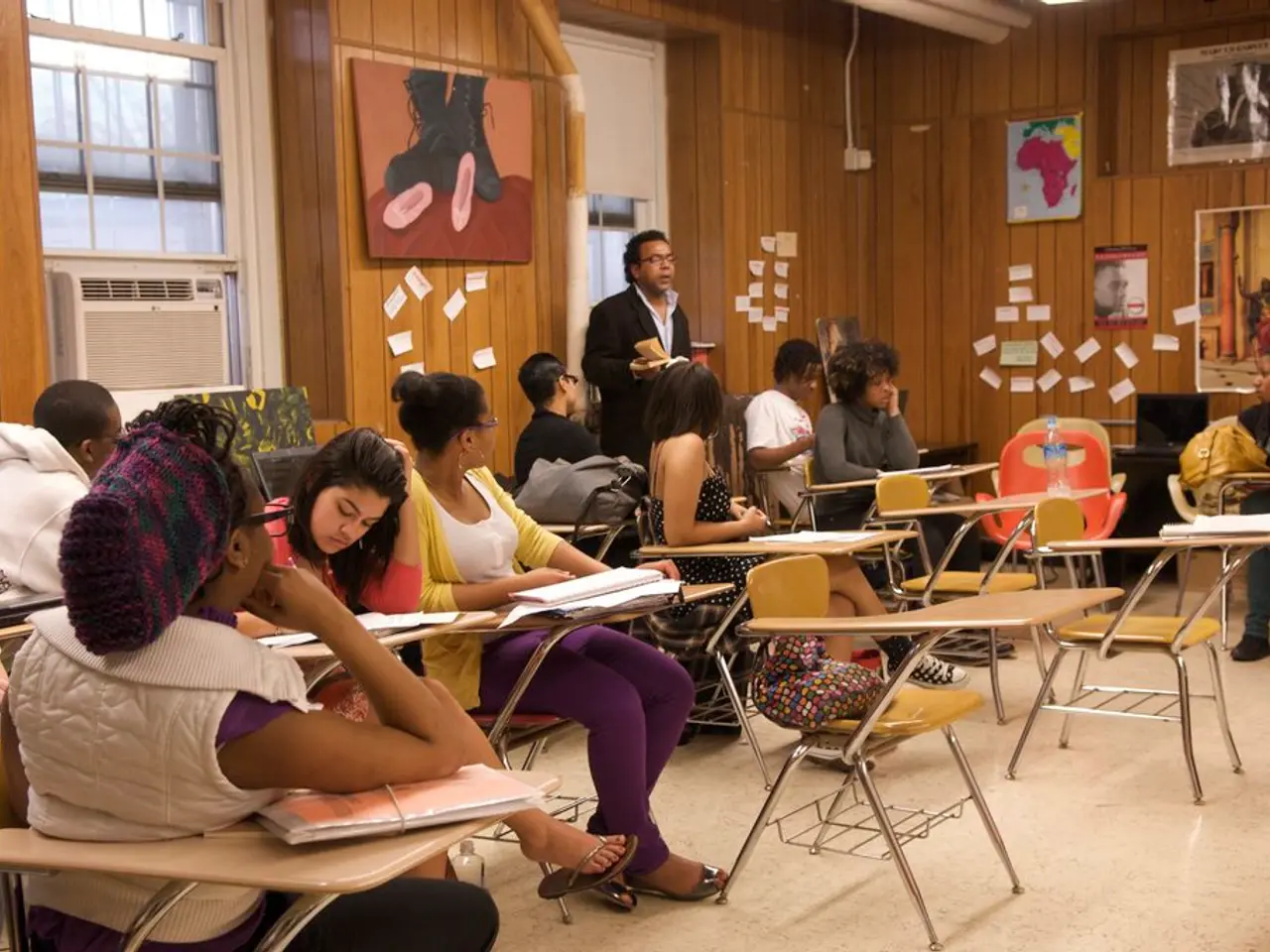Utilizing Technology for Enhanced Student Engagement during Instructional Sessions
===================================================================
In the first instalment of our three-part series focusing on the intentional use of technology in teaching and learning, we explore strategies for capturing student attention and enhancing engagement through animated content, gamified learning, and experiential experiences.
Animated Content
The use of videos, animations, and dynamic presentations can prove instrumental in capturing student attention and accommodating different learning styles. Tools like Nearpod, Zoom, Google Classroom, and virtual whiteboards allow the integration of interactive slides, videos, and virtual tours, keeping students engaged while visually explaining complex concepts. Online whiteboards also support animated demonstrations to clarify ideas in real-time.
Gamified Learning
Incorporating game elements such as points, badges, leaderboards, and challenges can motivate students by turning learning into an adventure. Platforms such as Kahoot and Gimkit provide game-based quizzes for friendly competition, while Open edX, with gamification tools like badges and progress dashboards, has demonstrated high engagement and motivation in learners.
Experiential Learning
Using simulations, augmented reality (AR), and virtual reality (VR) creates immersive environments where students can practice skills and apply knowledge realistically. AR/VR platforms enable training for complex fields, such as medicine and aviation. Dialogue simulations encourage negotiation and decision-making in risk-free scenarios.
Examples of tools and platforms for these strategies include Nearpod, Kahoot, Gimkit, Open edX gamification plugin, AR/VR simulations, dialogue simulation software, and more. By blending these approaches tailored to learner preferences, educators can enhance engagement and retention, promoting interaction, active participation, and meaningful exploration of content.
It is important to note that, despite being digital natives, students may not automatically connect with technology in schools in a meaningful way. Using technology for specific purposes with the goal of advancing learning outcomes is crucial.
In the following parts of this series, we will delve deeper into the world of edtech, exploring additional strategies for engaging students and fostering a love for learning. Stay tuned for more insights on the power of technology in education!
References:
[1] iCivics (n.d.). Retrieved from https://www.icivics.org/ [2] Lisa Whiston (2021). Using Nearpod to Create Digital Escape Rooms. Retrieved from https://www.techedventures.org/blog/using-nearpod-to-create-digital-escape-rooms/ [3] PhET Interactive Simulations (n.d.). Retrieved from https://phet.colorado.edu/ [4] Tech & Learning (2021). Best Virtual Field Trips for Arts and Cultural Engagement. Retrieved from https://www.techlearning.com/content/best-virtual-field-trips-arts-and-cultural-engagement [5] Google Arts & Culture (n.d.). Retrieved from https://artsandculture.google.com/ [6] Google Earth (n.d.). Retrieved from https://www.google.com/earth/ [7] Powtoon (n.d.). Retrieved from https://www.powtoon.com/ [8] Labster (n.d.). Retrieved from https://www.labster.com/ [9] Digital Escape Games (n.d.). Retrieved from https://digitalescapegames.com/ [10] Kahoot! (n.d.). Retrieved from https://kahoot.com/ [11] Gimkit (n.d.). Retrieved from https://www.gimkit.com/ [12] Open edX (n.d.). Retrieved from https://open.edx.org/ [13] Roblox (n.d.). Retrieved from https://www.roblox.com/ [14] Minecraft: Education Edition (n.d.). Retrieved from https://education.minecraft.net/en-us/home
- The student's learning experience can be enhanced by employing digital tools like Nearpod, Zoom, Google Classroom, or virtual whiteboards, which facilitate interactive slides, videos, and virtual tours, catering to diverse learning styles.
- Gamified learning, through platforms such as Kahoot and Gimkit, can transform learning into an exciting adventure for students, with game elements like points, badges, leaderboards, and challenges encouraging motivation and engagement.
- Immersive environments can be created through the use of AR/VR platforms, enabling students to practice skills and apply knowledge in realistic scenarios, especially in complex fields such as medicine and aviation.
- As technology becomes an integral part of education, it's essential for educators to intentionally use digital tools like Nearpod, Kahoot, Gimkit, AR/VR simulations, and dialogue simulation software to foster active participation, interaction, and meaningful exploration of content.
- In our subsequent segments, we will delve into other edtech strategies aimed at capturing student attention and fostering a love for learning, including the use of interactive simulations, virtual field trips, creativity-boosting tools like Powtoon or Minecraft: Education Edition, and more.




